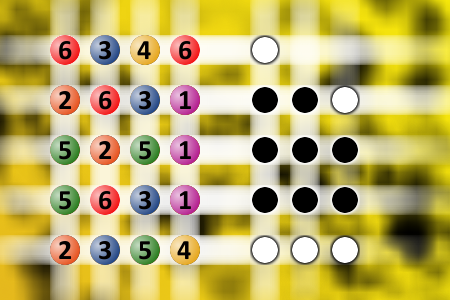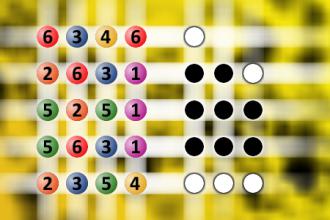Which is a winning combination of digits?
The computer chose a secret code (sequence of 4 digits from 1 to 6). Your goal is to find that code. Black circles indicate the number of hits on the right spot. White circles indicate the number of hits on the wrong spot.Correct answers: 40
The first user who solved this task is Djordje Timotijevic.
#brainteasers #mastermind

A man who suffered from impote...
A man who suffered from impotence went to see a doctor. The doctor gave him a revolutionary new injection made from monkey glands, which worked perfectly. Nine months and two weeks later, his wife had a baby.
When the nurse came out of the delivery room with the news, he asked, "Is it a boy or a girl?"
"We won't know until we can get it down off the chandelier."
When the nurse came out of the delivery room with the news, he asked, "Is it a boy or a girl?"
"We won't know until we can get it down off the chandelier."

